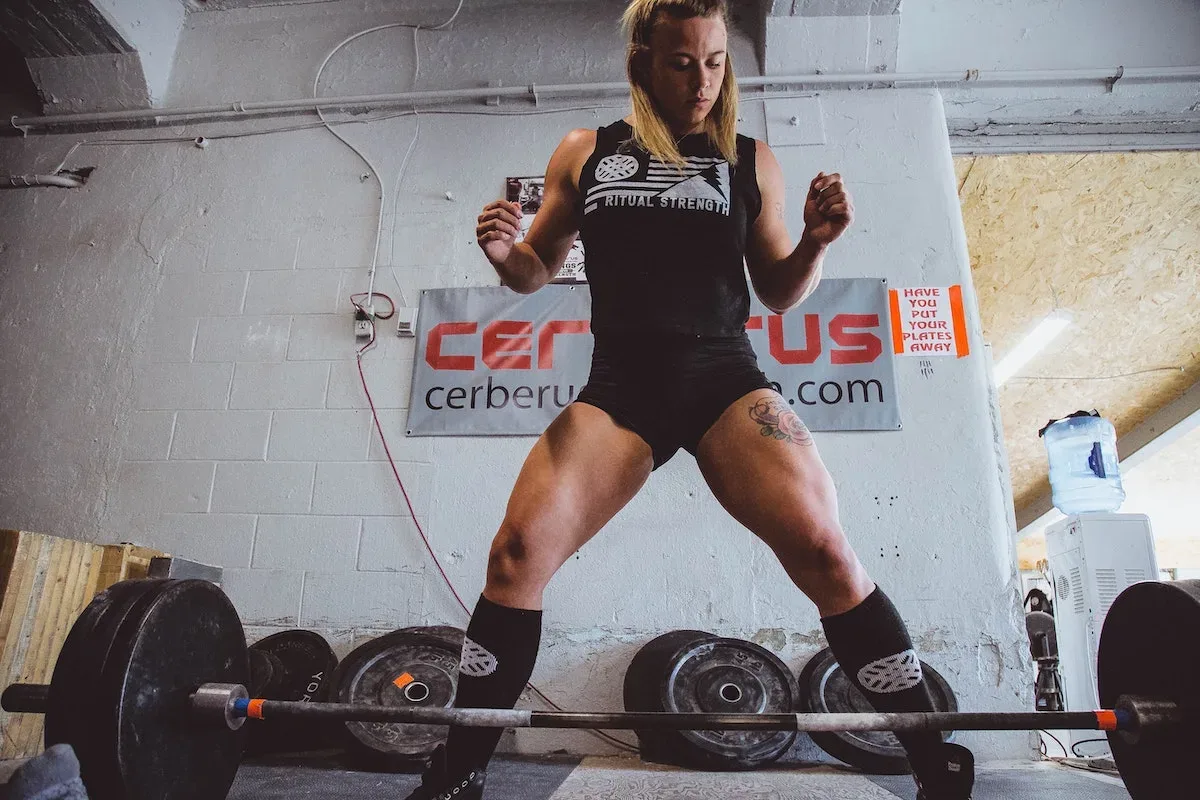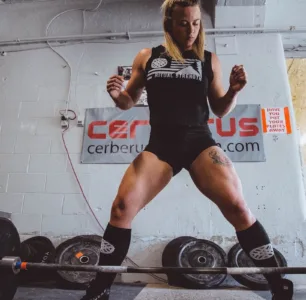Muscle power is one of the essential components of physical fitness. It is the ability of the body to produce force at a given time, often measured by how much weight one can lift, jump, or throw. It is a crucial aspect of many sports and everyday activities, including lifting heavy objects, climbing stairs, and even walking.
Improving muscle power involves both increasing muscle strength and enhancing the body’s ability to generate force quickly. Strength training and explosive exercises are two effective ways to build muscle power.
Strength training involves lifting heavy weights for multiple sets and repetitions to increase muscle size and strength. This method is beneficial for improving muscle power as it increases the maximal force that a muscle can generate. Additionally, explosive exercises such as plyometrics and Olympic weightlifting movements improve muscle power by enhancing the body’s ability to generate force quickly.
Muscle power is essential for athletes in many sports, including basketball, football, and track and field. In basketball, for example, explosive power is necessary for jumping and making quick cuts on the court. Football players require explosive power for tackling and running fast. Track and field athletes need explosive power for sprinting, jumping, and throwing.
Furthermore, muscle power is an essential component of everyday activities such as lifting heavy groceries, climbing stairs, and walking. As we age, muscle power tends to decline, leading to reduced mobility and an increased risk of falls. However, incorporating strength training and explosive exercises into our exercise routine can help prevent this decline and improve overall physical fitness.
Muscle power in rugby
Muscle power is a critical component in rugby as it requires players to generate explosive power and strength to perform various actions on the field. Rugby players need to have a combination of strength, speed, and agility to be successful in their roles.
In rugby, muscle power is required for actions such as tackling, scrummaging, rucking, mauling, and sprinting. For example, when a player is tackling, they need to generate a quick burst of power to propel themselves forward and bring down their opponent. Similarly, in scrummaging, players need to generate a lot of force to push the opposition team back and gain possession of the ball.
Rucking and mauling also require players to have excellent muscle power, as they involve several players pushing against each other to gain possession of the ball. The players need to have a combination of strength and speed to push the opposition team back and secure the ball for their team.
Finally, sprinting is another critical aspect of rugby, as players need to generate quick bursts of power to outrun their opponents and score tries. Sprinting requires explosive power in the leg muscles, allowing players to accelerate quickly and reach top speed.
To improve muscle power in rugby, players need to focus on strength and explosive training exercises. Exercises like power cleans, plyometrics, and sprint intervals can help improve muscle power, speed, and agility. Additionally, resistance training and functional training can also help improve overall strength and power, making players more effective on the field.
What makes Muscles powerful
Muscle power is the ability of muscles to generate force quickly. Factors such as muscle fibre types, muscle size, neural activation, muscle contraction speed, training, and genetics all play a role in making muscles powerful. By focusing on proper training and exercise, individuals can improve their muscle power and enhance their overall physical performance.
Several factors contribute to making muscles powerful:
- Muscle Fibre Types: The two primary types of muscle fibres are slow-twitch and fast-twitch. Fast-twitch fibres are responsible for generating quick bursts of power and are critical for explosive movements such as jumping and sprinting.
- Muscle Size: The size of the muscle plays a significant role in generating force. Larger muscles have more muscle fibres, allowing them to generate more force.
- Neural Activation: Neural activation refers to the ability of the nervous system to activate muscle fibres. Stronger neural activation leads to more muscle fibres being activated, resulting in increased force production.
- Muscle Contraction Speed: The speed at which a muscle can contract is essential for generating explosive power. Muscles that can contract quickly can generate more power in a shorter amount of time.
- Training: Proper training can increase muscle power by improving strength, neural activation, and muscle size. Exercises that focus on explosive movements, such as plyometrics and Olympic weightlifting, can help improve muscle power.
- Genetics: Genetics play a role in muscle power, as some individuals are naturally predisposed to having more fast-twitch muscle fibres, which are better suited for explosive movements.
Is building Muscle power all about lifting weights?
No, building muscle power is not solely about lifting weights. While lifting weights is an effective way to increase muscle strength and size, building muscle power is not solely about lifting weights. Exercises that focus on explosive movements, such as plyometrics, Olympic weightlifting, and sprinting, can also help improve muscle power and overall physical performance.
Muscle power is the ability of the body to generate force quickly, and it can be improved through a variety of exercises that focus on explosive movements. Plyometrics, Olympic weightlifting, and sprinting are all examples of exercises that can improve muscle power without necessarily lifting heavy weights.
Plyometrics are exercises that involve explosive jumps and movements, such as jump squats or box jumps. These exercises can help improve muscle power by enhancing the body’s ability to generate force quickly.
Olympic weightlifting movements, such as power cleans or snatches, also focus on explosive movements that require a combination of strength, speed, and technique. These exercises can help improve muscle power by training the body to generate force quickly and efficiently.
Sprinting is another effective way to improve muscle power, as it requires the body to generate quick bursts of power to accelerate and reach top speed.
In addition to these exercises, resistance bands, medicine balls, and bodyweight exercises can also be used to improve muscle power. These exercises focus on using the body’s own resistance to generate force quickly, making them effective for improving muscle power.
Which muscles need to be the most Powerful for Rugby players?
Rugby is a physically demanding sport that requires players to have a combination of strength, power, and endurance. Here are some of the muscles that need to be the most powerful for rugby players:
- Quadriceps: The quadriceps are the muscles located at the front of the thigh and are responsible for extending the knee. Rugby players need powerful quads for sprinting, jumping, and tackling.
- Glutes: The gluteal muscles are located in the buttocks and are responsible for hip extension. Powerful glutes are essential for accelerating and generating power in movements such as scrummaging and mauling.
- Hamstrings: The hamstrings are located at the back of the thigh and are responsible for knee flexion and hip extension. Powerful hamstrings are crucial for sprinting, jumping, and tackling.
- Calves: The calf muscles are located at the back of the lower leg and are responsible for plantarflexion, which is pointing the foot downward. Powerful calves are necessary for accelerating, sprinting, and jumping.
- Core: The core muscles, including the abs, lower back, and hip muscles, provide stability and power for movements such as tackling, rucking, and mauling.
- Upper Body: The upper body muscles, including the chest, back, and arms, provide power for pushing, pulling, and tackling.
How can teenage girls develop Muscle power without bulking up
Teenage girls can develop muscle power without bulking up by focusing on exercises that improve strength and power without necessarily increasing muscle size. By incorporating bodyweight exercises, resistance bands, explosive movements, sprint intervals, and proper nutrition, teenage girls can improve their muscle power and overall physical performance.
Here are some tips to help teenage girls develop muscle power without bulking up:
- Focus on bodyweight exercises: Bodyweight exercises such as push-ups, squats, and lunges are excellent for building muscle power without bulking up. These exercises focus on using the body’s own weight to build strength and power, making them effective for improving muscle power without necessarily increasing muscle size.
- Incorporate resistance bands: Resistance bands are an effective way to build muscle power without bulking up. These bands provide resistance to the muscles, helping to improve strength and power without necessarily increasing muscle size.
- Focus on explosive movements: Exercises that focus on explosive movements, such as plyometrics and Olympic weightlifting movements, can help improve muscle power without bulking up. These exercises focus on generating quick bursts of power, making them effective for improving muscle power without necessarily increasing muscle size.
- Incorporate sprint intervals: Sprint intervals are an excellent way to improve muscle power without bulking up. These intervals involve sprinting at maximum effort for a short period and then resting for a short period before repeating. This type of training improves the body’s ability to generate quick bursts of power, making it effective for improving muscle power without bulking up.
- Focus on proper nutrition: Proper nutrition is essential for building muscle power without bulking up. Teenage girls should focus on consuming a balanced diet that includes lean protein, complex carbohydrates, and healthy fats. This will help support muscle growth and development without causing excessive weight gain.
Examples of a good set of Muscle power exercises for teenage girls
Here are some examples of a good set of muscle power exercises for teenage girls:
- Squat Jumps: Stand with your feet shoulder-width apart and lower your body into a squat position. From this position, explode upward, jumping as high as possible. Land softly and immediately lower back into a squat position to complete one rep. Do three sets of 10 reps.
- Resistance Band Rows: Attach a resistance band to a stable anchor point and hold onto the handles. Step back until you feel tension in the band and then bend your knees slightly. From this position, explosively pull the handles toward your chest, squeezing your shoulder blades together. Return to the starting position and repeat for three sets of 10 reps.
- Push-Ups: Begin in a plank position with your hands placed shoulder-width apart. Lower your body toward the floor, keeping your elbows close to your body. Push back up to the starting position to complete one rep. Do three sets of 10 reps.
- Sprint Intervals: Find a track or flat surface and sprint at maximum effort for 20-30 seconds. Rest for 30-60 seconds and then repeat for a total of 5-8 sprints.
- Dumbbell Power Cleans: Begin with dumbbells in each hand, feet shoulder-width apart. Squat down and explosively stand up, pulling the dumbbells up to shoulder height. Lower the dumbbells back down to the starting position and repeat for three sets of 10 reps.
- Lateral Jumps: Stand with your feet together and jump laterally to the side, landing on one foot. Immediately jump back to the starting position and repeat on the other side. Do three sets of 10 reps.
Remember to warm up before beginning your workout and cool down and stretch after your workout to prevent injury and soreness. By incorporating these exercises into a regular workout routine, teenage girls can improve their muscle power and overall physical performance.
In conclusion, understanding and improving muscle power is crucial for enhancing physical fitness and improving performance in many sports and activities. Strength training and explosive exercises are two effective ways to improve muscle power and overall physical performance. By incorporating these exercises into your exercise routine, you can unlock the key to strength and endurance and enjoy a healthier, more active lifestyle.

